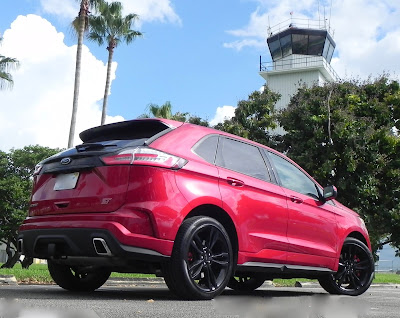LUXURY COMES TO PICKUP TRUCKS
WITH 2020 GMC SIERRA 1500 DENALI
I don’t know when pickup trucks started coming with price tags that used to be found only on top-end luxury sedans, but there is no question you can spend just as much on a workhorse vehicle these days as you can on a thoroughbred.
Not saying you have to, of course, because manufacturers tend to start with lower-end pricing, but they certainly can work their way up rather quickly.
All you have to do is start with their top-of-the-line models and start adding options and available packages and pretty soon you have a truck in the $60,000 to $70,000 range or even more.
A neighbor of mine who drives a very nice pickup for work can only shake his head and wryly smile when he looks at the bottom line pricing for trucks like the Denali edition of the 2020 GMC Sierra 1500 that recently assumed temporary residence in my driveway.
Starting MSRP for the Denali is $58,200, which is a pretty big hunk of change in itself and soon balloons out to $71,850 when options like the CarbonPro Edition (carbon fiber box, HD surround vision, adaptive cruise control, lane-departure warning, and much, much more), a 6.2-liter V8 engine (in place of the standard 5.3-liter and available exclusivcely on 4-wheel drive Denalis ), and a special paint job (white frost tricoat) are added on.
The 6.2L V8 offers 420 horsepower, max torque of 460 pound-feet, and fuel economy ratings of 15 miles-per-gallon city, 20 highway, and 17 combined. The torque number equals that of the diesel engine. It is paired with a 10-speed automatic transmission.
Of course, you don’t have to go spend $70,000. Starting MSRP for the base 2020 Sierra 1500 is $31,195, but even that might stretch what used to be a typical budget for a pickup.
The Sierra 1500 is offered in six trims (Sierra, SLE, , SLT, AT4, and Denali) and is a slightly upgraded version the more popular Chevrolet Silverado, which, by the way, carries an MSRP that starts at just a tad under $30,000.
They both have the same engine options, which includes the previously mentioned V8s (5.3L and 6.2L) along
with a turbocharged 4-cylinder and V6 and a 3.0L turbo diesel, and they both offer configurations that include Regular Cab, Double Cab and Crew Cab body styles.
with a turbocharged 4-cylinder and V6 and a 3.0L turbo diesel, and they both offer configurations that include Regular Cab, Double Cab and Crew Cab body styles.
The Denali comes exclusively with the Crew Cab, which provided lots of room and creature comforts that created a more SUV-like ambiance.
To separate the Sierra from its sibling Silverado, GMC trims it with some upgraded interior materials and some other features, like a six-function tailgate that can serve as a work bench or provide easier access for loading stuff, are available only on the Sierra. That MultiPro tailgate is standard on the Denali, but the carbon-fiber bed is available in optional CarbonPro package.
Other standard features on the Sierra Denali include a Driver Alert Package (front and rear park assist, lane-change alert with blind-spot alert, and rear cross-traffic alert), a 2-speed transfer case for 4WD models, adaptive ride control, a trailering package, premium infotainment system with an 8-inch touchdown and navigation, Apple CarPlay and Android Auto, Bluetooth communications, Bose Premium Sound system, dual-zone climate control, 10-way power front bucket seats, a huge front storage bin, ventilated front seats, heated and leather-wrapped steering wheel, OnStar services, keyless open and start, wireless and USB charging, power outlet in the bed, 12 cargo tie-downs, LED headlamps and fog lamps, and dual exhaust with chrome tips.
One pretty neat feature is an available camera-based rear-view mirror that provides high-def images. It is included in the CarbonPro Edition suite of features.
What I liked about the 2020 GMC Sierra 1500 Denali: The rear camera mirror is really cool. You don’t have to worry about adjusting the mirror and the image is very sharp.The infotainment system controls are very user friendly as well. Hooray!
What I didn’t like about the 2020 GMC Sierra 1500 Denali: Not sure the extra cost over the Chevy Silverado is worth it when the main difference between the two seems to be the multi-purpose tailgate on the Sierra, but the tailgate is kind of neat. A full-size pickup (231.7 inches long with a 5-foot-8 box, 241.2 with the longer 6-6 box, and 81.2 inches wide), the Sierra is a bear to maneuver in mall parking lots.
Would I buy the 2020 GMC Sierra 1500 Denali? As I have mentioned many times, I don’t have a need for a full-size pickup, but if I did, I would be shopping this one. It is really difficult to separate the top models in the segment. It would come down to what the dealer offered.

























